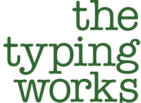Facilitating a focus group (or ‘running a focus group’ is an art form in itself! It requires balancing active engagement, productive discussion, and clear communication—all while keeping the conversation focused on the research objectives. Good facilitation is not only critical for eliciting valuable insights from participants but also for ensuring the session can be successfully transcribed afterward. Below, we explore the key elements of effective focus group facilitation with transcription in mind.
1. Preparation is Key
A successful focus group begins long before participants take their seats. The facilitator must be thoroughly prepared, familiar with the discussion guide, and clear on the group’s objectives.
- Why it matters for transcription: Preparation ensures the facilitator can smoothly guide the conversation, minimising interruptions and keeping discussions relevant resulting in cleaner audio recordings.
Tips:
- Familiarise yourself with participant profiles to anticipate diverse perspectives.
- Prepare clear, open-ended questions to stimulate discussion.
2. Establish Ground Rules Early
At the start of the session, set clear communication guidelines. Encourage participants to speak one at a time, avoid side conversations, and articulate their thoughts clearly.
- Why it matters for transcription: Overlapping voices and unclear speech can lead to confusion and inaccuracies in the transcript. Ground rules set the tone for an orderly discussion.
Facilitator Script Example: “Let’s try to avoid talking over each other so that we capture everyone’s ideas clearly. I’ll make sure everyone gets a chance to contribute.”
3. Use Names or Identifiers
To ensure clarity in the transcription process, have participants introduce themselves at the start and consider assigning names or unique identifiers (e.g., Participant A, Participant B).
- Why it matters for transcription: Identifying who is speaking adds context to the transcript, making it easier to analyse individual perspectives.
Pro Tip:
- Use name cards or ensure participants state their name before responding, particularly in virtual focus groups.
4. Foster a Comfortable Environment
Participants are more likely to share openly when they feel at ease. A skilled facilitator fosters a safe, respectful space where all voices are welcomed.
- Why it matters for transcription: When participants are comfortable, they articulate more clearly and provide richer, more useful data for transcription.
Strategies:
- Start with icebreakers to ease tension.
- Encourage quieter participants to share their thoughts without pressuring them.
5. Manage Dominant Voices
In any group, some individuals may dominate the conversation. While their input is valuable, it’s crucial to balance their contributions with those of quieter participants.
- Why it matters for transcription: If one voice overpowers the session, the transcript may lack diversity, skewing the analysis.
Facilitator Strategies:
- Redirect the conversation with phrases like:
“Thank you for sharing. Let’s hear from someone who hasn’t spoken yet.” - Use the discussion guide to introduce new topics and shift focus when necessary.
6. Keep the Conversation on Track
A focus group is not a free-for-all discussion. While organic dialogue is encouraged, the facilitator must gently steer the conversation back on track when it wanders off-topic.
- Why it matters for transcription: Focused discussions result in concise, relevant transcripts that are easier to analyse.
Facilitator Cue: “That’s an interesting point. How do you think it relates to [key topic]?”
7. Monitor and Minimise Background Noise
External disruptions can derail a session and complicate transcription. The facilitator should be mindful of the environment and address issues like loud participants, fidgeting, or technical glitches.
- Why it matters for transcription: Clear audio recordings are essential for accurate transcription, especially when relying on automated tools or professional transcribers.
Actionable Steps:
- Test recording equipment beforehand.
- Politely address any noisy behaviors during the session.
8. Use Probes to Deepen Insights
Good facilitators know how to dig deeper without leading participants. Use neutral probes to clarify or expand on ambiguous statements.
- Why it matters for transcription: Probing elicits detailed responses, enriching the transcript with depth and context.
Examples:
- “Could you elaborate on what you mean by that?”
- “Why do you think that is?”
9. Provide Summaries and Transitions
Summarise key points during the session and use transitions to signal shifts in discussion topics. This creates natural breaks and clear organization.
- Why it matters for transcription: Summaries and transitions act as guideposts in the transcript, making it easier to follow the conversation flow.
Facilitator Example: “Let’s recap what we’ve discussed so far: [summarize key points]. Now, let’s move on to [next topic].”
10. Conclude with Reflection
At the end of the session, invite participants to reflect on the discussion and share any final thoughts. This often brings out valuable insights not previously covered.
- Why it matters for transcription: Closing reflections can add clarity and emphasize recurring themes, enriching the final transcript.
Facilitator Cue: “Before we wrap up, does anyone have any additional thoughts or ideas they’d like to share?”
Why Good Facilitation Matters for Transcription
Effective facilitation directly impacts the quality of a focus group transcript. Clear communication, balanced participation, and well-managed discussions create a session that is easier to record, transcribe, and analyze. Poor facilitation, on the other hand, can lead to fragmented, unclear transcripts that fail to capture the depth and richness of the conversation.
By prioritising good facilitation, you ensure that your focus group not only achieves its research objectives but also produces a transcription that serves as a reliable foundation for analysis.
